











SOUTH
















































gather April 28,




















BY EMILY BRETH | STAFF WRITER

BY EMILY BRETH Cu duck
CALEDONIA — When Kim Klees and her husband, Terry Cushman, started raising backyard chickens for fresh eggs, they did not intend for it to flourish into a business of pasture-raised poultry while working full time jobs off the farm.
“We do it because we like to know where our food’s coming from, and we want to provide the same to the community,” Klees said.
“I know the majority of our customers appreciate that they

know their food is being raised to have a high nutritional pro
The couple raises the majority of their poults on the Cushman’s family farm near Caledonia, where they have 15-20 acres set aside for pastures. At RedC Farms they raise mainly ducks with some chickens and a few turkeys.

Their business originated from a small flock of backyard chickens they got for fresh eggs when they were expecting their first child.
“We wanted to raise (the kids) around animals, and then the backyard chickens just took off,” Klees said.
Now, on average, the couple has been raising between 1,000-1,500 ducklings and poults a year — about 800 ducks, 600 chickens and 100 turkeys. Last year, however, was different because the couple took in 1,500 chickens from Wisconsin that would have otherwise been euthanized.
With the additional chickens, the couple had the opportunity to turn a charitable idea into reality. “We raised chickens for donation,” Klees said. “We received funding and
Ducks walk around their pasture Aug. 10, 2024, at the Cushman farm near Caledonia. The family has 15-20 acres dedicated to pasture.
Kim Klees Kim Klees
donations from organizations or people so that we could then move chicken to local food shelves as a meat source. We try not to say ‘No’ when people ask for help.”
The couple did this in partnership with Southeast Minnesota Food Rescue and Redistribution. Close to 300 of their personal stock was donated, and the remaining 1,200 chickens they took in through the food rescue were partnered with local farmers to prevent waste and to distribute chicken to food shelfs as well as lower income families.
“I am on the board for that nonprofit,” Klees said. “Our goal is to prevent food insecurity in underserved communities. We help farmers prevent waste by moving product that they may not have an outlet to sell. We want to help small farmers succeed and serve the community.”
RedC Farms page 2
MONTH IN THE















Published by Star Publications
Copyright 2025 522 Sinclair Lewis Ave. Sauk Centre, MN 56378
Phone: 320-352-6577 | Fax: 320-352-5647
NEWS STAFF
Mark Klaphake, General Manager, mark.k@dairystar.com
Amy Kyllo, Editor, amy.k@star-pub.com
Tiffany Klaphake, Writer, tiffany.k@dairystar.com
Ben Sonnek, Writer, ben.s@saukherald.com
Emily Breth, Writer, emily.b@star-pub.com
Rae Lanzrath, Writer, rae.l@star-pub.com
Sara Hoppe, Copy Editor
Publisher:
Joyce Frericks, 320-352-6577, joyce@saukherald.com
Story ideas send to: amy.k@star-pub.com
SALES STAFF
Laura Seljan, 507-350-2217, laura.s@dairystar.com
Julia Merten, 507-438-7739, julia.m@star-pub.com
Bob Leukam, 320-260-1248, bob.l@star-pub.com
PRODUCTION STAFF
Amanda Thooft, amanda@saukherald.com
Cheyenne Middendorf, cheyenne@star-pub.com
Nadiia Griepentrog, nadiia@star-pub.com
Deadlines:
Country Acres South will be published the first Saturday of every month. Deadline for news and advertising is the Friday a week before publication.

The Buddy’s Best booth is set up May 31, 2024, at the Fayette County Fairgrounds in West Union, Iowa. In order to not waste anything from the poultry butchering process, owner Kim Klees freeze dries unwanted parts for pet treats.
An example of this is taking the extra meat and bringing it to a school or food shelf and still paying the farmer a fair wage for the product through a variety of grant programs and other initiatives, Klees said. She said a lot of the chicken they donated this year was through the partnership with the food rescue.
“It is also something that we do ourselves for our Christian beliefs, so we donate what we can when we have it,” Klees said. “Part of our overall Christian belief is to give back to our community through servant leadership however we can.”



Publications bli ti
“The newspaper of today is the history of tomorrow.”
RedC Farms page 3
A group of ducklings gather July 3, 2024, at the Cushman farm near Caledonia. Farmer Kim Klees gives some of the farm’s poultry to local food shelves through donations and grants.







from page 2
The rest of the poultry products are sold at farmers markets and online orders with pickups in Winona. Klees attends the La Crescent and Rochester farmers markets. This year, they have started looking into providing wholesale for restaurants, co-ops and schools when they are able to expand their flock numbers.
“Our plan for the farm moving forward is to grow a little bit bigger so that we can provide more meat year-round,” Klees said. “I really would like to be able to consistently provide to anyone that is looking for quality poultry.”
to utilize as much of their poultry birds as possible.
One way they do this is by taking parts not utilized by most people and turning them into pet treats via freeze drying.
she would also like to grow their duck egg operation. She said if they were able to support 200–300 ducks for laying, they could provide duck eggs more consistently. As of now, they have a couple chickens and ducks for laying that are mainly for their own use unless they have a surplus.
a hope for this year is to make their way into Wisconsin and sell at the La Crosse and Onalaska farmers markets as well. They also plan on adding in regional shipping along with an on-farm store in the future.






A group of ducks gather around a water pan Aug. 29, 2024, at the Cushman farm near Caledonia. er regional shipping along with an on-farm store in the
(Left) Ducks take a break Aug. 10, 2024, at the Cushman farm near Caledonia. Farmer Kim Klees hopes to sell at the La Crosse, Wisconsin, and Onalaska, Wisconsin, farmers markets this


“
We really are doing (all of this) for the community. We are doing it to put good food on our plates and make sure quality, nutritious food goes on else’severyone plates as well. - Kim Klees
“Right now, we are really focusing on dropoffs,” Klees said. “I have no problem meeting people, and they can always call me for drop-offs and delivery versus having to wait for a market, especially in wintertime, since markets are only once a month.”
All their birds are processed through Stacyville Poultry Processing out of Stacyville, Iowa. They used to do their own butchering
up until they wanted the meat to be U.S. Department of Agriculture certified.
“(Stacyville) is about an hour and 40 minutes from us, but it’s definitely worth it,” Klees said. “They’re a smaller processor, but they’re USDA (certified), so … (the meat) can be sold pretty much anywhere, even over state lines and online.”
offer a variety of packages to be more convenient for families. To fulfill their orders, the couple get flocks of around 200300 ducklings or poults at a time from April through November.
“We really are doing (all of this) for the community,” Klees said. “We are doing it to put good food on our plates and make sure quality, nutritious food goes on everyone else’s plates as well.”
She said they have seen an impact in the community, especially since they have been able to donate more poultry to their local food shelves.
“We will keep doing that in a heartbeat,” Klees said.






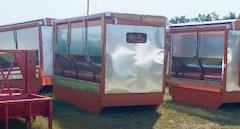




MONDAY
8:00 am Overnight market cows/bulls
10:00 am Fed cattle, followed by day-delivered market cows & bulls
1:00 pm Dairy cattle, stock cows & breeding bulls followed by feeder cattle
4:00 pm Baby calves, arena 2
TUESDAY
8:00 amSheep and goats
11:00 am Feeder pigs
WEDNESDAY
10:00 am Hog/Sow/Boar Auction
2:00 pm Fed cattle, followed by market cows and bulls
THURSDAY
10:00 am Special feeder cattle auctions, September - April
FRIDAY
Closed Office open 8:00 am – Noon
YARD HOURS
Sunday Noon – 9 pm
Monday 6am – 9 pm
Tuesday 6 am – 9 pm
Wednesday 6 am – 4 pm
(Wednesday before Special Sales, open until 8:00 pm)
Thursday 6 am – 4 pm
Friday 6 am – Noon
Saturday By Appointment




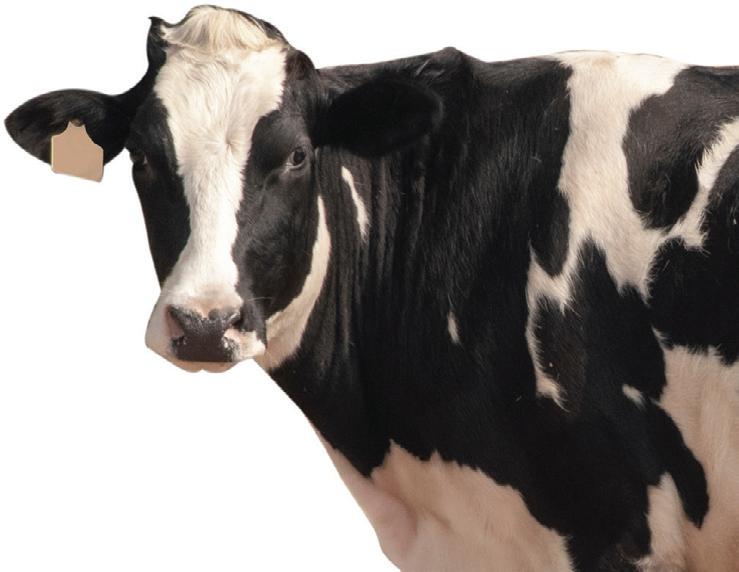
















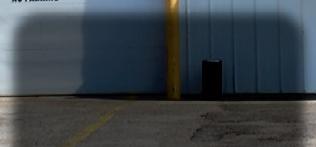


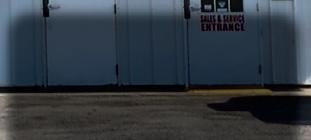

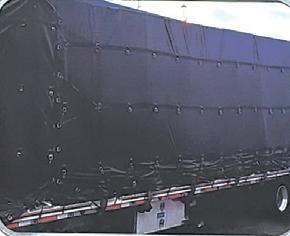












Every spring, I get the bug to change, declutter or organize my living space. During the coronavirus pandemic, that meant going through all my stuff, cleaning my room from top to bottom and guiltily taking an unnecessary trip to Menards — combined with buying eggs to assuage my conscience — to buy paint.


The next year, it was painting and going through Dad and Mom’s room. Last year, it looked like throwing stuff away to the tune of half my clothes and part of my home items going out the door to the thrift store in garbage sacks.
It’s pretty cathartic to throw stuff away and find yourself surrounded by things you love.
The throwing spree all started with a book I read called “The Lifechanging Magic of Tidying Up” by Marie Kondo. For some of you, Kondo’s “spark joy” method might be cliché, and for others, you may have never heard of it.
The basic concept is to reduce your possessions significantly by making sure each and every item brings you joy. She encourages people to go through their home category by category and touch every item within that category. When you touch the item, you decide if the item sparks joy or not. If it does, you keep it. If it does not, you throw it away.
For example, you might touch all the dishes in your cupboard and throw away those three bowls from an old set that you realize you don’t really like all that much. It might mean taking down the picture from the wall which, in theory, is quite pretty but always feels blah when you look at it. Or, it might mean throwing away those three sweaters you wear every three weeks but never actually feel excited about when you put them on.
For me, the book was extremely useful, and I highly recommend it. The “sparks joy” method actually works, as weird as it sounds on paper. The concept that it’s OK to actually love all your stuff and part ways with the things that make you feel blah or secretly annoyed is pretty empowering. The method helped make my space fully mine and filled with things that make me smile.
I realize this method comes from a place of privilege of having extra clothes or household items or money to replace things you don’t actually like.
There is, of course, a time to just stick it out with what you have, but the idea that I can get rid of something functional that, deep down, I don’t like and replace it with something I do enjoy is amazing.
If you’re in the spring-cleaning mood, I’d recommend checking the book out from the library and seeing if you feel inspired.
Another thing I found helpful from her book is the concept that a gift has served its purpose by conveying love as soon as it is given. This means you can get rid of a gift. I also appreciated the idea that the amount of stuff you’re meant to have will fit in your space. After the purge, I found my small closet actually fit my clothes, and, overall, my space was more peaceful because my stuff was not exploding.
I should clarify that I’m definitely not a minimalist. I love stuff, but I hate the overwhelming feeling of having too much or living in a cluttered and disorganized space. I love to go shopping or thrifting and get new fun things, which means I always have to balance the influx with an outflux.
Not only have I enjoyed the decluttering concepts for myself, but I have been dumping my new ideas on my unsuspecting friends and family. That has included me coming home and cheerily convincing my longsuffering mom we should go through some closet or cupboard while I persuade her to throw stuff away. It’s much easier to throw away stuff that’s not yours, so I perhaps can be the tiniest bit insufferable at times. She’s a pretty good sport about it all.
I’m not anti-family heirlooms by any stretch. I am the third-generation owner of some family dishes which I love and intend to keep forever. I just want to keep the distinct balance between keeping things with memories and history without bloating my house with ancient treasures. Quality of memories and beauty over quantity of items is key when it comes to heirlooms. There are some things we won’t miss if they go down the road for someone else to love.
Marinate on the idea of a space filled with things you actually enjoy versus a space filled with things you feel secretly compelled to keep. Loving your space may just change your life, or, at minimum, lighten your closets.
Happy spring cleaning.

















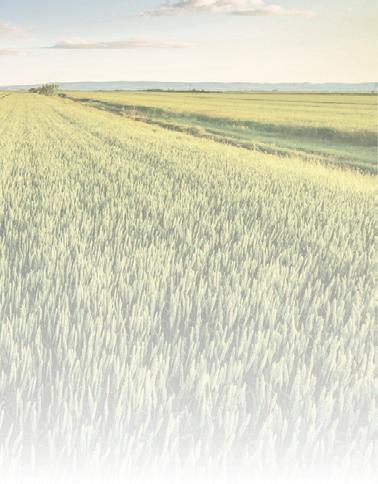














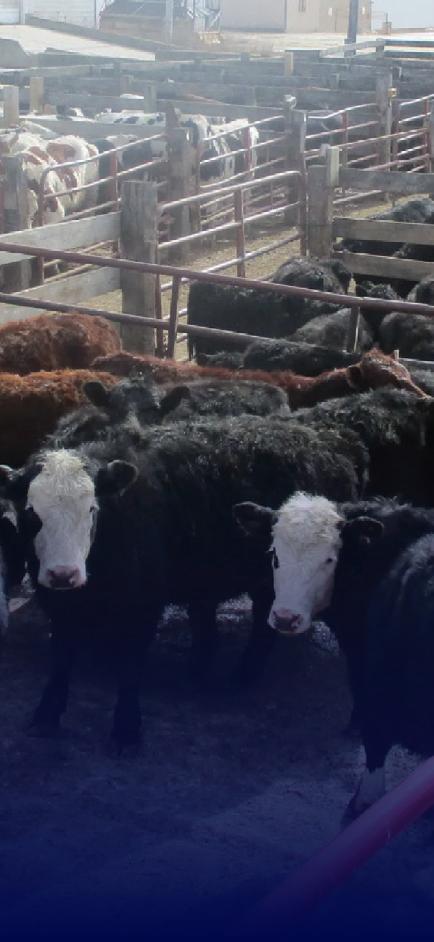
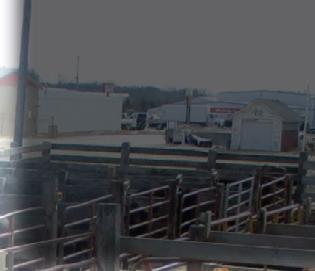






























Bill and Ellen purchased the farm’s 13 acres in November 2013 and started farming in April









BY BEN SONNEK | STAFF WRITER
ZUMBRO FALLS
— In the early spring, the fields at the Hare & Tortoise Farm are untouchably muddy, but the greenhouse has emerging seedlings — kale, onions and more.
“This time of year, you have a little bit of a vacation time in the greenhouse,” said Bill
Orton, who owns Hare & Tortoise farm with his wife, Ellen Orton.
“Anytime you get to go to the greenhouse, it’s a real treat. … You’re in a tropical 85-degree temperature, and it feels magical.”
It has taken a decade of work and learning for the Hare & Tortoise Farm
near Zumbro Falls to get where it is today, giving the benefits of country living to the Ortons, their children — Molly, Isaac, Mary and Andrew — and their customers.
“It has been a little bit of a fish-out-of-water experience,” Bill said.
“I’ve had to learn basically everything on the job, and all I claim to have is the desire and willingness
to work hard. … I got into this primarily because I saw it was a way I could be with my family all the time, and my kids could actually see what I do for a job.”
Bill and Ellen were both raised in the Chicago suburbs. They first met at a party; Ellen taught biology at the time, and Bill was talking about agriculture and horticulture, and they bonded over that.
“I was interested in
getting out of the suburbs of Chicago and being able to have more land (and) elbow room,” Bill said. “I believe (Ellen) said to her roommates in college she was going to start a farm, and it ended up coming true.”
Through friends of friends, Bill heard about Heartbeet Farm, a small, family-run farm near Zumbro Falls that was doing the kind of farming that interested him.
“I called them up to see if I could get an internship,” Bill said. “I was pretty persistent; I emailed them four times, starting in September 2010 (through December), … (and) I got their phone number and got in touch with them.”
Hare & Tortoise page 8



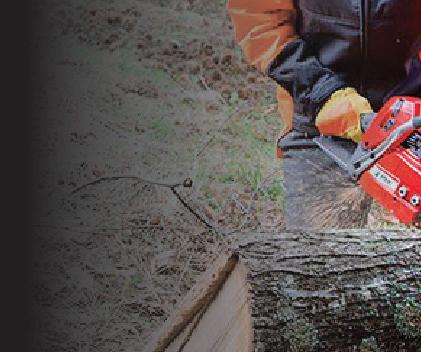






After meeting the Heartbeet Farm owners in January 2011, Bill got an internship with them, and he found he loved the lifestyle after two weeks of work. Once he and Ellen married, they bought 13 acres in Zumbro Falls in November 2013, and they started farming in April 2015, around when Molly was born.
The name for Hare & Tortoise Farm came from Bill’s appreciation for turtles as well as Ellen’s love of rabbits.
“I’ve always identified with the turtle, slow and steady,” Bill said. “(The name) is kind of like Aesop’s fable, except that the hare and tortoise are working together cooperatively rather than in competition with one another.”
Hare & Tortoise Farm grows mostly greens, such as lettuce, spinach, arugula and cilantro, along with carrots, beets and peppers. Alongside Heartbeet Farm, they sell wholesale to the Twin Cities and Rochester areas.
Hare & Tortoise Farm will also soon be doing a Community Supported Agriculture program, where customers will buy a share of the farm’s harvest and receive seasonal produce for 20 weeks. While the Ortons will continue to sell wholesale, they hope the CSA will allow them to meet more of their customers than they would otherwise while also supporting the farm through the lower-income spring months.
“We’re hoping to do (a CSA) so more people come out to the farm,” Bill said. “The advantage of doing what we’re doing is we can have people stopping by. We’re hoping to have more on-the-farm dinners with our CSA customers.”
When it comes to their farming practices, the Ortons do what they can to reduce tilling and maintain their soil’s ecosystem, and they test their soil every year to ensure the micronutrients are balanced.
“Soil is teeming with life,” Bill said. “If you till too much, that breaks up the fungal networks that are in the soil, and plants communicate with each other through the fungal networks. … We’re always adding composted cow’s manure to our fields. We do a lot of cover cropping,
(and) some crops will draw nutrients from down in the soil and bring them up to the surface.”
Farming has been a learning experience for the Orton family. While their education experience helps them understand plants and the soil, they have also needed to manage the other — often literal — nuts and bolts of farm life.
“You can take the boy out of the suburbs, but you can’t take the suburbs out of the boy,” Bill said. “I’ve definitely been a suburban transplant who hasn’t necessarily always known what to do.”
Fortunately, the Ortons’ neighbors have helped Hare & Tortoise Farm with characteristic Minnesota niceness Orton said. Roads run along two sides of the farm, and, in the early years, Bill noticed many locals who would slow down for a look while driving by.
“I’ve been very humbled by the generosity of my neighbors as well as their expertise compared to my lack of expertise when it comes to small engines and knowing how to run a tractor, et cetera,” Bill said. “People are surprised at what I don’t know.”
The Orton children lend a hand on the farm where they can, helping cut greens, harvest carrots and wash produce.
“They’re hard little workers, and they learn a lot,” Bill said. “My daughter, Molly, is in charge of our bell peppers, … (and) we’re about to offer more things for my son (Isaac) to do as well. We’re hoping the CSA is something they take ownership of. That’s another reason we’re doing CSA, for our kids to have more opportunities to help out around the farm.”
As Hare & Tortoise Farm enters its 10th year, the Ortons can see the fruits of their labor coming into place, both with their fields and their family.
“I love that (the children) can look out the window and see where I am on our property,” Bill said. “(They) come find me, help me for a half-hour or an hour and run back in. It’s a lovely way to raise a family. They’re outside constantly, it really feels like we’re providing a childhood that’s nothing short of wonderful and magical.”





























Ask questions, start small and see where it takes you.
Share the recipes, equipment, wine tasting and experiences with a friend and/or partner.
Realize that grapes need fertilizing, watering, pruning and spraying.
Winemaking involves washing, rinsing, sanitizing, siphoning, lifting, sampling, labeling and note taking.
Buy time-saving equipment slowly as the need arises: corker, refractometer, crusher destemmer, press and spraying gear.
A shortcut would be buying wine kits or grapes from a vineyard, which can be just as fun and rewarding.
from page 9
“It has to do with the light units that happen, how hot it is, how cool it is, when (the grapes) bloom in the spring, how long the fall is,” Gloria said. “It’s a whole year’s process. If you don’t like what you did, you have to wait another year, and you have to make sure you take good notes so you can remember what you did and did not like.”
Once the grapes are harvested and cleaned, the Agentens put them through a crusher de-stemmer. The de-stemmer function is especially valuable the Agentens said because it can take hours to de-stem grapes by hand. Then, the grapes go into a wine bladder press. The press has a centrally placed bladder, and, when it is filled with water, it expands and presses the fruits’ juices through the holes on the device’s outer shell. The Agentens also sometimes use a potato masher to help it along. Leftover fruit and grape skins go to the Agentens’ chickens.
The juice then goes into a large tub for fermenting. Red grapes are fermented on their skins, white grapes are not. When the sugars are low, the juice is removed and settles some more in glass carboy jars to finish off the sugars and let the sediment settle. Three to six months later, the wine is ready for bottling. One year, Gloria made juice instead of wine and canned it.
The Agentens typically do not mix grapes with other fruits for wine, although Gloria has gotten good results with a mix of Frontenac Gris grapes with peach flavoring or juice. They do not make elderberry or rhubarb wine anymore; elderberry has a stickiness that gums up winemaking equipment, and Gloria does not enjoy rhubarb wine.
Black raspberry wine is one of the Agentens’ non-grape favorites.
“You go out and spill blood, sweat and tears amongst those thorny black raspberries to get enough to make a wonderful batch of wine,” Gloria said.
Fruit wines typically do not last as long as grape wines, so the Agentens do not keep their wines for extended periods. Their oldest bottle is usually about three years old.
The Agentens give their wine away as gifts or for fundraisers, and they have tasting parties with friends.
For the Agentens, the significant investment of time, effort and money that goes into winemaking is worth it when the wine is in their glass — or the glasses of their friends.
“It’s a lot of work, but the fun part is trying something new,” Gloria said. “It’s always an experiment. That’s what makes it interesting.”

One of Dan Miller’s vacation rental homes stands near Spring Valley. Miller has five properties currently available to rent: three houses, a cabin and a rustic 1800s barn hayloft complete with hay, with another property on the way.








SPRING VALLEY — Dan Miller got started as a vacation rental host because he had several extra homes and thought being a host would be more profitable and interesting than long-term renting out.
“It does take more labor and more management, but I enjoy working with people and meeting people and making sure they’re comfortable,” Miller said.
Miller, a farm business management instructor with Minnesota State Colleges and Universities, has hosted with various services for about four years. During the 400-500 stays
he has hosted, Miller abides by three things to be a successful vacation rental host: communication, cleanliness and safety.
Miller’s repertoire consists of five rural properties: three houses, a cabin and a rustic 1880s barn hayloft complete with hay. His listings are on Airbnb, Vrbo and Hipcamp.
Another vacation rental coming online soon is a finished shed. Miller is the main person in charge of the listings but is occasionally assisted by his six children.
Miller page 13






















Whether you're updating your kitchen, adding more space, or tackling those long-awaited projects, a Home Equity Line of Credit (HELOC) gives you the financial flexibility to make it happen.


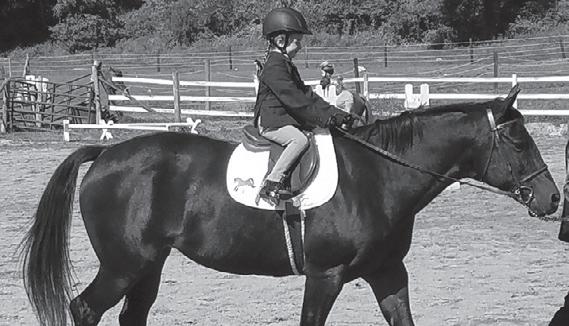
























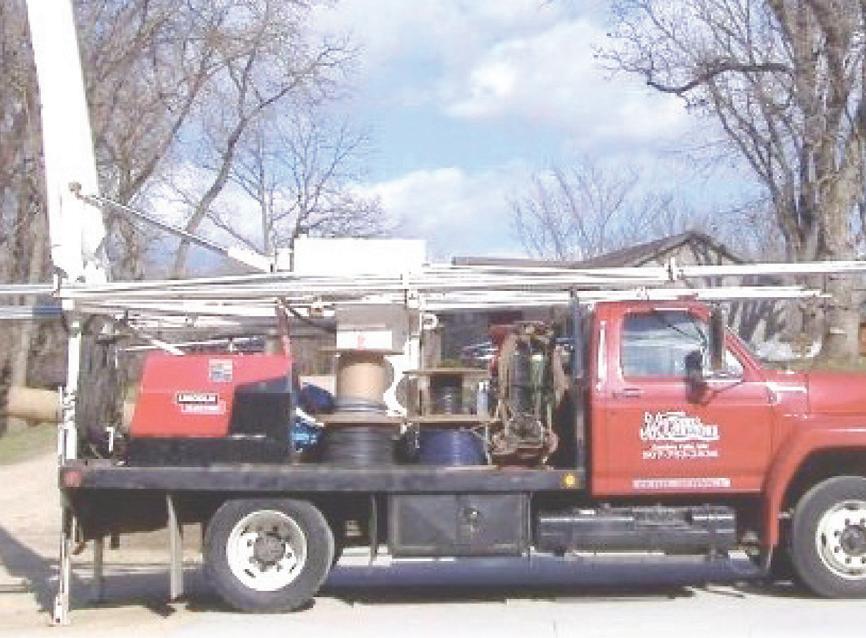





























Watson shares her gardening experience
BY EMILY BRETH STAFF WRITER
STEWARTVILLE
— From being a little girl working in the garden with her grandma and her par-
ents to having her own garden full of herbs and vegetables, Julia Watson has grown not only plants but also her interest in gardening. Watson’s garden spans approximately a quarter of


• Document and keep track of things from year to year to remember what worked, what did not and things to try.
• Planning is important, whether it is dates to get things planted by or how the garden is laid out and making it make sense for the gardener’s needs and how they want do things.
an acre. The plants include a range of vegetables and fruits including tomatoes, cucumbers, beans, peas, raspberries, potatoes, carrots, onions, beets, garlic, asparagus and celery.
“When I got married and moved out to the country is when I started a bigger garden,” Watson said. “When I was living on my own and single, I had some container gardening, but not to the extent that I have now, so it’s only gotten bigger.”
She also has herbs like oregano, thyme and rosemary. A newer addition to her garden has been flowers.
“The first few years of gardening, I was mostly focused on vegetables, and, now, I’m adding a lot more flowers and cut flowers around the garden and attracting pollinators,” Watson said. “That is something that has been a lot more fun recently.”
Watson page 15





ed ke things
mething ng s once is in,
• Try something new every year.
• Planting things closer together reduces the amount of weeds once everything is in, and not as much weeding is required.








• Be aware of soil health. Make sure it is good soil and be aware of amending soil and fertilizing.



ware wa . h. soil and be od e of amend nd nd fertilizin a spac




• Have a space that kids can be in. The Watsons have a separate garden for the kids where they can plant what they want, and then can go in and pick it and make it their own space.






ons ons have a se th e th nt canlant o in and pick i own e.












Building quality homes without compromise






Houston Co. - 60 Acres - $300,000 - Sold
Co.
Olmsted Co. - 88 Acres - $825,000 - Sold
Olmsted Co. - 90 Acres - $693,000 - Sold
Olmsted Co. - 200
- Sold
Goodhue Co. - 55 Acres w/Home - $1,390,000 - Sold
Houston Co. - 21.5 Acres Farm w/Home - $599,000 - Sold
























PHOTOS SUBMITTED
Phyllis and
BY BEN SONNEK STAFF WRITER


ZUMBROTA — At this time of year, the flower gardens of Phyllis and Jerry Clemenson are not much more than sprouts at most. When the summer comes however, the couple are looking forward to the work and beauty that come from a landscape in full bloom.
Growing up in Lake City, Phyllis had a great-uncle who maintained a big flower garden at his home. Whenever Phyllis visited, she liked to walk around in it.
“My mother liked flowers, too, so it was always instilled in me to love flowers,” she said. “(I learned gardening) through my own trial and error.”
Phyllis and Jerry moved to their current home a few miles north of Zumbrota about 22 years ago when their son, Brian Clemenson, got married, and Phyllis started her gardens there. Today, she has one big plot, about five small plots and another long plot in front of a row of pine trees. Phyllis tilled these gardens herself, starting with her main plot and adding on as she needed.
“I just tilled up the grass and started planting,” she said. “It’s kept growing out every year, it seems like.”





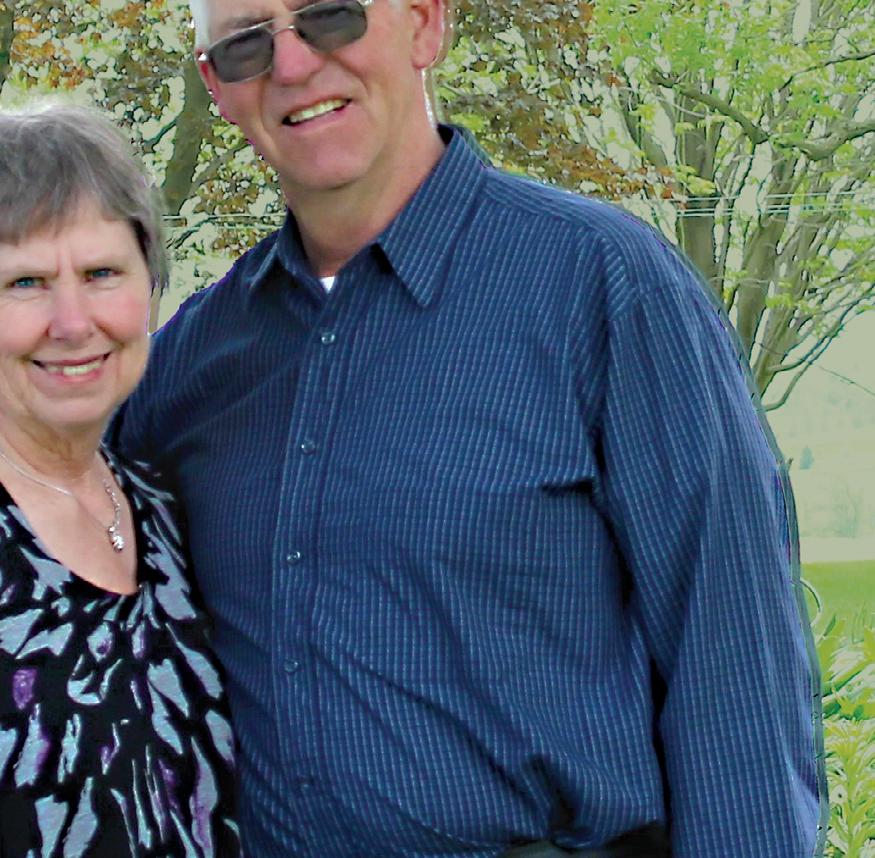


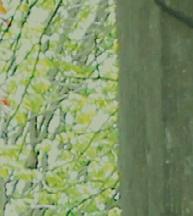







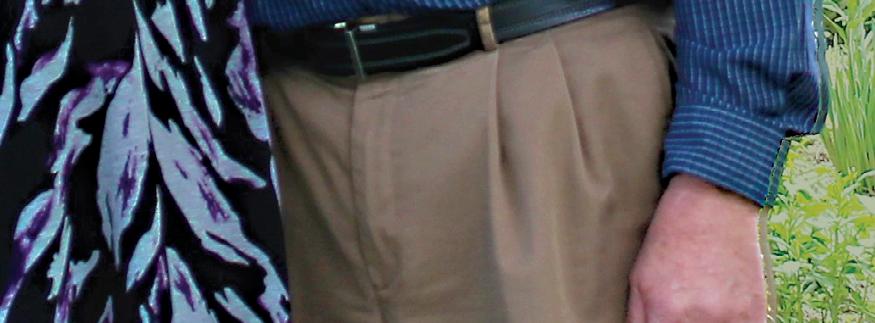

• Plant perennials for continual flowering.

• Plan con


• Choose plants for sunny or shady locations.

• Cho or s



• Be patient, as some owers are slow to come up in spring.
• Be p flow up i





• Get plants from a friend.
• Get























































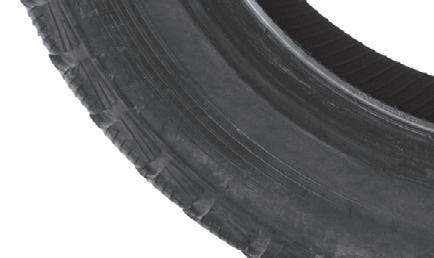






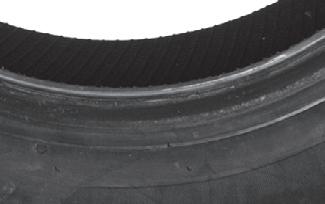

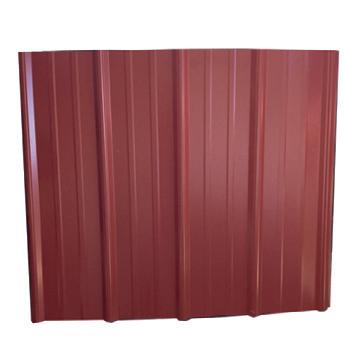
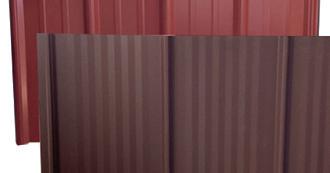














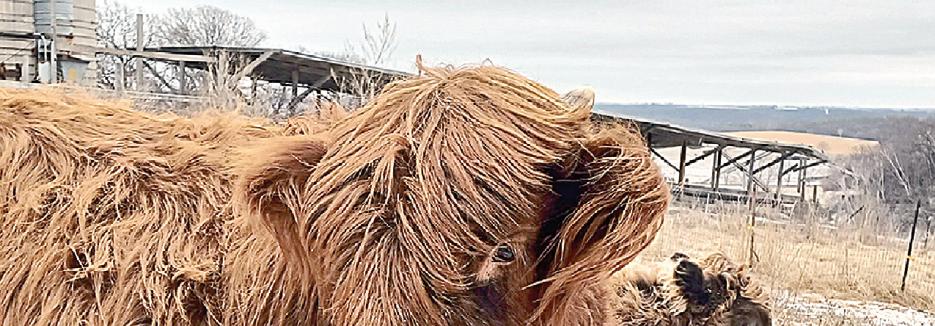


























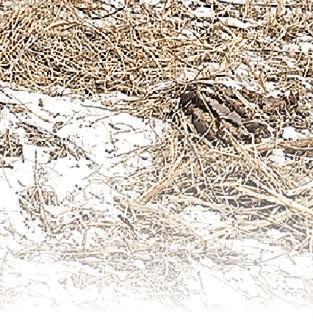






“Ag is huge on both sides of my family,” Zoellner said. “(My grandfather) bought back several family farms, and he always had a special love for this farm. … The fact that we’re bringing it back to its glory is really important to me.”
Zoellner shares their story via their farm’s social media. She said if she does not post for a few days, she gets texts wondering whether everything is OK.
“It’s people who don’t live on farms,” Zoellner said. “They’re so curious about agriculture.”
As they look to the future, the Zoellners have the goal to convert their grain bin into a farm office and store. Overall, they hope to keep updating the farm, pay it off and give their children the opportunity to take over.
“The idea is that, when we’re ready to retire, we can pass off a farm that’s fully functional and multifaceted,” Zoellner said.
The Zoellners said working on their farm is rewarding and has fit their vision for raising

their family.
“There’s just something that comes with that lifestyle,” Zoellner said. “It’s a slower pace. … You learn to appreciate
more. You’re contented with more. You’re more connected to the world around you, to your neighbors, to your community.”







Sunday, April 13th (online only) Estate Auction for the Harold and Patricia Schweisthal Estates; Bidding starts opening Saturday, April 5th at 8 am and bidding starts closing Sunday, April 13th at 4 pm.
Tuesday, April 22nd (online only) Firearms, Knives and Coins Auction; Bidding starts opening Saturday, April 12th at 8 am and bidding starts closing Tuesday, April 22nd at 4 pm.
Tuesday, April 29th (online only) Farm Equipment Estate Auction for The Doug Pirkl Estate; Bidding starts opening Saturday, April 19th at 8 am and bidding starts closing Tuesday, April 29th at 4 pm.
Tuesday, May 6th (online only) 18.4 Acre Building Site with Older Home, Newer Outbuilding for the Harold and Patricia Schweisthal Estates; Bidding starts opening Saturday, April 26th at 8 am and bidding starts closing Tuesday, May 6th at 10 am.
Sunday, May 11th (online only) Collector Car, Parts and Tool Auction for the Doug Pedersen Estate; Bidding starts opening Saturday, May 3rd at 8 am and bidding starts closing Sunday, May 11th at 3 pm.
Sunday, May 18th (online only) Complete Inventory Liquidation for Mapleton Farm and Home Store; Bidding starts opening Saturday, May 10th at 8 am and bidding starts closing Sunday, May 18th at 3 pm.
Tuesday, May 20th (online only) Construction Auction for the Jim Gramse Plaster and Stucco Company; Bidding starts opening Monday, May 12th at 8 am and bidding starts closing Tuesday, May 20th at 4 pm.
Wednesday, May 28th (online only) Care Facility Architectural Salvage and Reclaimed Materials Auction; Bidding starts opening Saturday, May 17th at 8 am and bidding starts closing Wednesday, May 28th at 4 pm.
Monday, June 9th (online only) Early Summer Area Farmers Consignment Auction in Kenyon; Call now to consign your clean farm and construction equipment. Accepting consignments at lot Monday, May 19th through Thursday, May 29th. Bidding starts opening Saturday, May 31st at 8 am and bidding starts closing Monday, June 9th at 10 am.
Tuesday, June 10th (online only) Early Summer Area Farmers Consignment Auction in Dexter; Call now to consign your clean farm and construction equipment. Bidding starts opening Friday, May 30th at 10 am and bidding starts closing Tuesday, June 10th at 10 am. Sunday, June 22nd (online only) Moving Auction for Joe and Monica Boehmer; Bidding starts opening Saturday, June 14th at 8 am and bidding starts closing Sunday, June 22nd at 3 pm.
Tuesday, July 15th (online only) Clean Farm
Retirement Auction for Michael and Dana Timmers; Bidding starts opening Saturday, July 5th at 8 am and bidding starts closing Tuesday, July 15th at 10am. Friday, August 1st (live and online) Exceptionally Clean Farm Retirement Auction for Terry and Cindy Vaith and Bob and Karen Vaith of Ellendale; Live auction begins Friday, August 1st at 10 am. Saturday, August 9th (live and online) Pre-Harvest Area Farmers Consignment Auction in Kenyon; Call now to consign your clean farm and construction equipment.; Accepting consignments at lot Wednesday, July 30th through Wednesday, August 6th. Live auction begins Saturday, August 9th at 8:30 am. Friday, August 15th (live and online) Farm Retirement Auction for Dwayne and Judy Hensrud at Medford; Live auction begins Friday, August 15th at 10 am.
Friday, August 22nd (live and online) Clean Farm Retirement Auction for Ted and Shirley Hinrichs at Albert Lea; Bidding starts opening Wednesday, August 13th at 10 am and live auction begins Friday, August 22nd at 9 am.
Saturday, August 23rd (live and online) Clean Farm Retirement Auction for Michael Wojahn at Windom; Live auction begins Saturday, August 23rd at 9:30 am.
Sunday, August 31st (online only) Annual Labor Day Consignment Auction Day 1; Advertising deadline Tuesday, August 5th. Bidding starts opening Friday, August 22nd at 10 am and bidding starts closing Sunday, August 31st at 9 am.
Monday, September 1st (live and online) Annual Labor Day Consignment Auction Day 2 at Dexter; Advertising deadline Tuesday, August 5th. Live auction begins Monday, September 1st at 9 am.
dates to be added as the year goes on!








After years of searching for the perfect home that fits their needs or would be excited to renovate, John and Nancy decided to build! Around that same time, they attended the Eagle Bluff Environmental Learning Center’s presentation about the Passive House movement – an exceptionally rigorous building standard that results in a home which, using the latest technologies, has the smallest carbon footprint currently possible.
The concept hit home. John says he doesn’t consider himself an “environmentalist” per se; he just believes in living within his means.


“We believe in energy conservation. We believe in protecting our valuable non-renewable resources. But we’re also big believers in electricity and living the lifestyle we’ve come to know within reason, but just to do it more efficiently and more economically.”
To see more testimonials visit us at www.solarconnectioninc.com
































